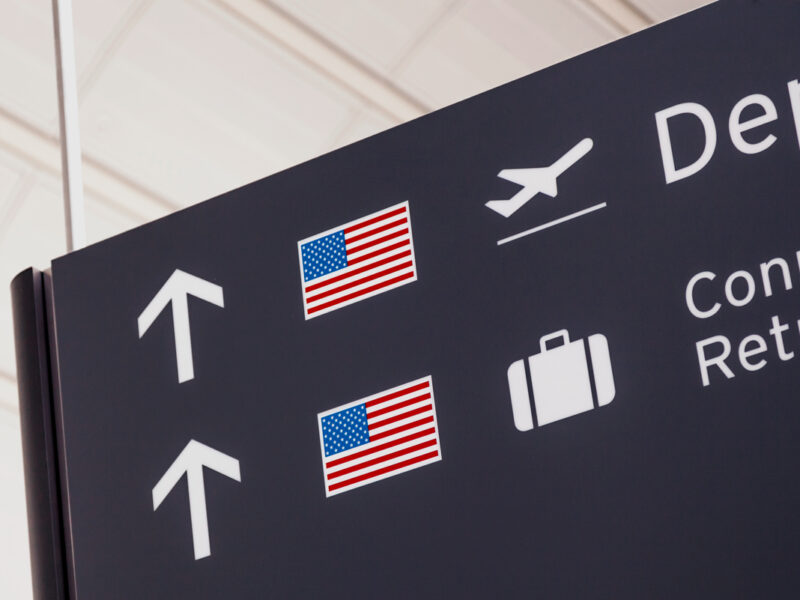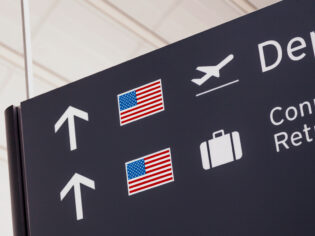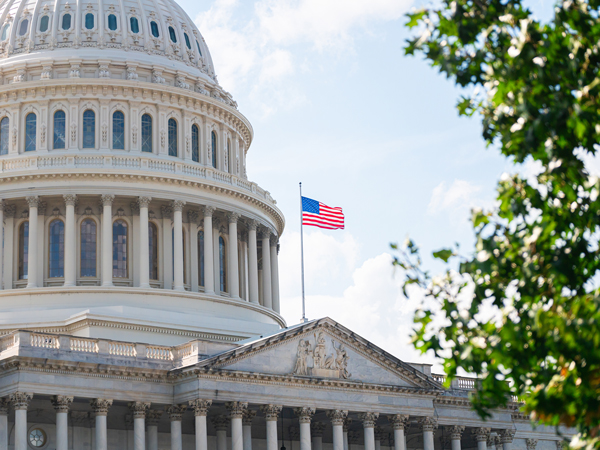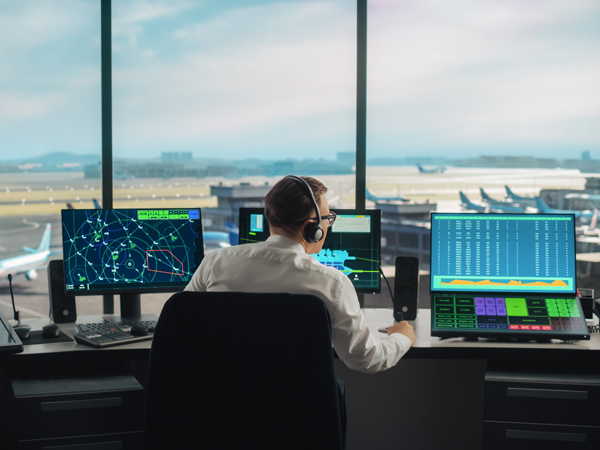Australians facing travel disruptions amid USA government shutdown


The Federal Aviation Administration (FAA) has announced that at least 10 per cent of flights into 40 of the USA’s busiest airports are set to be cut, triggering delays and cancellations nationwide. Here’s what’s going on– and how it may affect you.
With the United States in the midst of a government shutdown, a number of key federal services have been disrupted, impacting millions of citizens across the country. However, the ripple effects are starting to spread, with consequences increasingly likely to reach Australian travellers.
The government shutdown explained
If you haven’t kept up with the headlines lately, you may not be aware of what’s going on in the United States, so here’s a quick explainer. On 1 October, the nation’s federal budget expired. Typically, a new bill is passed around the same time that outlines how funding will be distributed in the coming year, which is signed off by the Senate.

The United States government is currently in shutdown. (Image: Getty/Jeremy Poland)
Trump’s Republican administration controls the majority of the Senate, holding 53 of its 100 seats. However, under the USA’s filibuster rule, 60 votes are required to pass the bill, meaning support from some Democratic or Independent senators is necessary. Currently, both minority parties are at odds with the Republicans over certain aspects of the bill, seeking amendments before allowing it to pass.
The disagreement has caused a political standstill, resulting in the current government shutdown. It’s officially the longest in United States history, surpassing the previous record of 35 days on 5 November. For over 600,000 government workers, this has led to an indefinite period of unpaid leave, and an extra 700,000 “essential” government employees (including air traffic controllers and TSA agents) have been working without pay.

Federally funded programs like SNAP have been severely impacted. (Image: Getty/Jet City Image)
Over 40 million citizens have lost access to food aid, as funding for the Supplemental Nutrition Assistance Program (SNAP), known as food stamps, has now run out. Benefit verification has also been interrupted, several federally funded schools and institutions have been forced to shut and major national parks across the country are closing.
How it affects Australia
So, what does this mean for Australians? While many of the USA’s core challenges don’t directly impact us, the ripple effects are starting to be felt. According to the Federal Aviation Administration (FAA), over half of the USA’s major airports are experiencing staff shortages. Thousands of TSA officers and air-traffic controllers have been working without pay for weeks. Now, many are rightfully refusing to continue, leaving security checkpoints and control towers severely understaffed.

Air traffic controllers have been forced to work without pay for weeks. (Image: Getty/Gorodenkoff)
Near breaking point, the FAA has announced that at least 10 per cent of flights into 40 of the country’s busiest airports are set to be cut, triggering delays and cancellations nationwide. The cuts will require airlines to reduce flights at affected airports by 4 per cent, starting immediately, with flight cancellations to increase by 1 per cent each day until they reach 10 per cent quota.
Cities currently affected include New York, Los Angeles, Houston, Dallas, Chicago, Atlanta, Denver, Orlando, Miami and San Francisco (see the full list of affected airports below). But with no end to the government shutdown in sight, several more airports are expected to be placed under similar restrictions.
The full list of airports affected includes:
1. Anchorage International (ANC)
2. Hartsfield-Jackson Atlanta International (ATL)
3. Boston Logan International (BOS)
4. Baltimore/Washington International (BWI)
5. Charlotte Douglas International (CLT)
6. Cincinnati/Northern Kentucky International (CVG)
7. Dallas Love (DAL)
8. Ronald Reagan Washington National (DCA)
9. Denver International (DEN)
10. Dallas/Fort Worth International (DFW)
11. Detroit Metropolitan Wayne County (DTW)
12. Newark Liberty International (EWR)
13. Fort Lauderdale/Hollywood International (FLL)
14. Honolulu International (HNL)
15. Houston Hobby (HOU)
16. Washington Dulles International (IAD)
17. George Bush Houston Intercontinental (IAH)
18. Indianapolis International (IND)
19. New York John F. Kennedy International (JFK)
20. Las Vegas Harry Reid International (LAS)
21. Los Angeles International (LAX)
22. New York LaGuardia (LGA)
23. Orlando International (MCO)
24. Chicago Midway (MDW)
25. Memphis International (MEM)
26. Miami International (MIA)
27. Minneapolis/St. Paul International (MSP)
28. Oakland International (OAK)
29. Ontario International (ONT)
30. Chicago O`Hare International (ORD)
31. Portland International (PDX)
32. Philadelphia International (PHL)
33. Phoenix Sky Harbor International (PHX)
34. San Diego International (SAN)
35. Louisville International (SDF)
36. Seattle/Tacoma International (SEA)
37. San Francisco International (SFO)
38. Salt Lake City International (SLC)
39. Teterboro (TEB)
40. Tampa International (TPA)
It’s not just airports impacted
The shutdown not only affects your plans—it also affects your itinerary. Even if your flight goes ahead and you make it through the congestion at security and customs, passengers still face closures at several major landmarks across the country. The National Park Service, as well as a number of museums and monuments, depend on federal funding and staffing.

National parks like Yosemite in California are facing closure. (Image: Getty/Gomez David)
Mesa Verde National Park in Colorado, considered one of the world’s ancient wonders, is partially closed – more than half of its 14,500-strong staff are now on unpaid leave. And while other popular tourist spots like Yosemite National Park and the Grand Canyon remain open, visitors may find roads unmaintained, restrooms locked and emergency services unavailable.
What happens next?
If you’ve got a trip to the United States booked, don’t cancel your flight just yet. The situation isn’t ideal, but it’s also constantly changing, and many agencies continue to roll out information by the hour. While major Aussie airlines like Qantas are still servicing routes to the USA, it’s important to prepare for disruptions, including delays, long security lines and overcrowding.

Travellers to the USA should expect delays and cancellations. (Image: Getty/Excentric_01)
If your flight does get cancelled, many airlines will rebook you on a later flight for no additional charge, but be sure to check your carrier’s website for policies and updates. Purchasing travel insurance can also help secure a refund or travel credit if you’re impacted – but only in certain circumstances.
At the time of publication, there has been no indication that votes in the Senate are shifting. For the government shutdown to end, all parties within the Senate are required to reach a compromise, and while 14 potential resolutions have been introduced, an agreement has yet to be reached.














LEAVE YOUR COMMENT